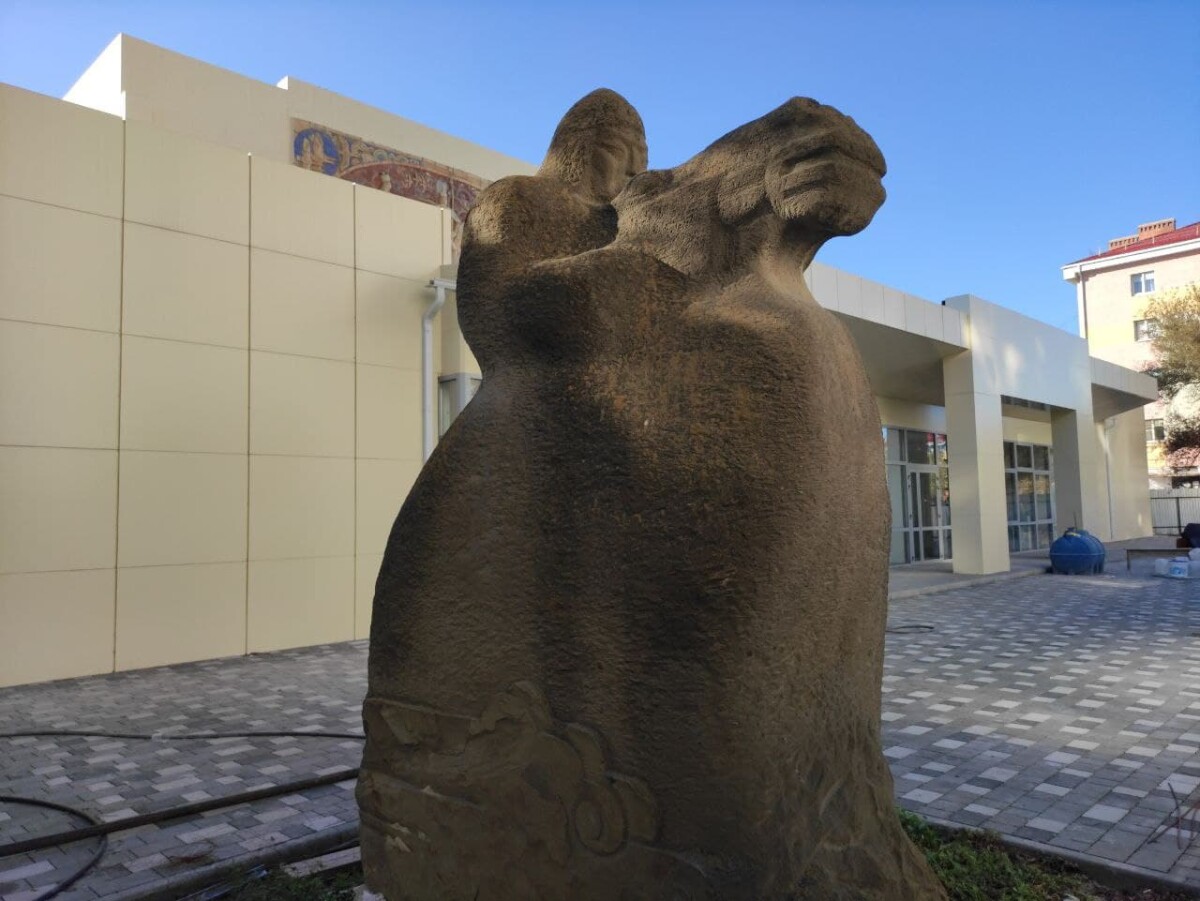
Скульптура «Всадник»
Всадник на мчащейся галопом лошади устремлен вперед. Его одежда, как и грива лошади, подхвачена встречным ветром. Одной рукой всадник держит поводья, а другой благодарно треплет круп лошади. Лицо всадника спокойно и в то же время вдохновенно. Он мчится навстречу своей счастливой судьбе. Объемно-монументальная композиция изображает соединившихся воедино всадника и лошадь. Плечи, руки, голова всадника выполнены в обтекаемой манере. Всадник изображен с монгольским типом лица в головном уборе в виде шлема. Руки всадника переходят к голове лошади, образуя единую форму.
Крупно, в рельефе оформлены глаза, ноздри, рот животного. Средняя часть скульптуры представляет гладкую структуру, с выпуклым объемом спереди и сзади. Нижняя часть памятника отшлифована, на ее поверхности нанесен орнамент в виде закругленных завитков. Всадник и конь изображены в момент скачки. Динамика движения подчеркивается положением головы коня и приникшего к лошади, всадника.
Автор запечатлел мгновение. Сам объем скульптуры составляет единое целое, одухотворенное и внутренне построенное, несмотря на отсутствие детализации, точного воспроизведения фигур человека и животного. Напряженные мускулы, сила, грация. «В седле сидел он, словно врос...» - строки из стихотворения А. И. Сусеева являются настоящей иллюстрацией к скульптуре.
Скульптура удачно расположена у Театра юного зрителя, фронтон которого украшен мозаичным панно, посвященным герою эпоса «Джангар». Сочетание скульптуры и панно делает органичным само пространство.
Материал: камень – песчаник
Автор: А.Миронов (в рамках Международного симпозиума скульпторов), 1997г.
Sculpture "Horseman"
The rider on a galloping horse is directed forward. His clothes, like the horse's mane, are caught up in the headwind. The rider holds the reins with one hand, while the other gratefully flaps the horse's croup. The rider's face is calm and at the same time inspired. He rushes towards his happy destiny. The volumetric-monumental composition depicts a rider and a horse joined together. The shoulders, arms, head of the rider are made in a streamlined manner. The horseman is depicted with a Mongolian face in a helmet-like headdress. The rider's hands move to the horse's head, forming a single shape.
The eyes, nostrils, and mouth of the animal are large, in relief. The middle part of the sculpture presents a smooth structure, with a convex volume at the front and back. The lower part of the monument has been polished; an ornament in the form of rounded curls is applied on its surface. The rider and the horse are depicted at the time of the race. The dynamics of the movement is emphasized by the position of the horse's head and the rider, who has clung to the horse.
The author captured the moment. The volume of the sculpture itself is a single whole, spiritualized and internally built, despite the lack of detailing, accurate reproduction of human and animal figures. Tense muscles, strength, grace. “He sat in the saddle as if he had grown ...” - the lines from the poem by A. I. Suseev are a real illustration of sculpture.
The sculpture is conveniently located near the Theater of the Young Spectator, the pediment of which is decorated with a mosaic panel dedicated to the hero of the epic "Dzhangar". The combination of sculpture and panels makes the space itself organic.
Material: stone - sandstone.
Author: A. Mironov (within the framework of the International Symposium of Sculptors), 1997.